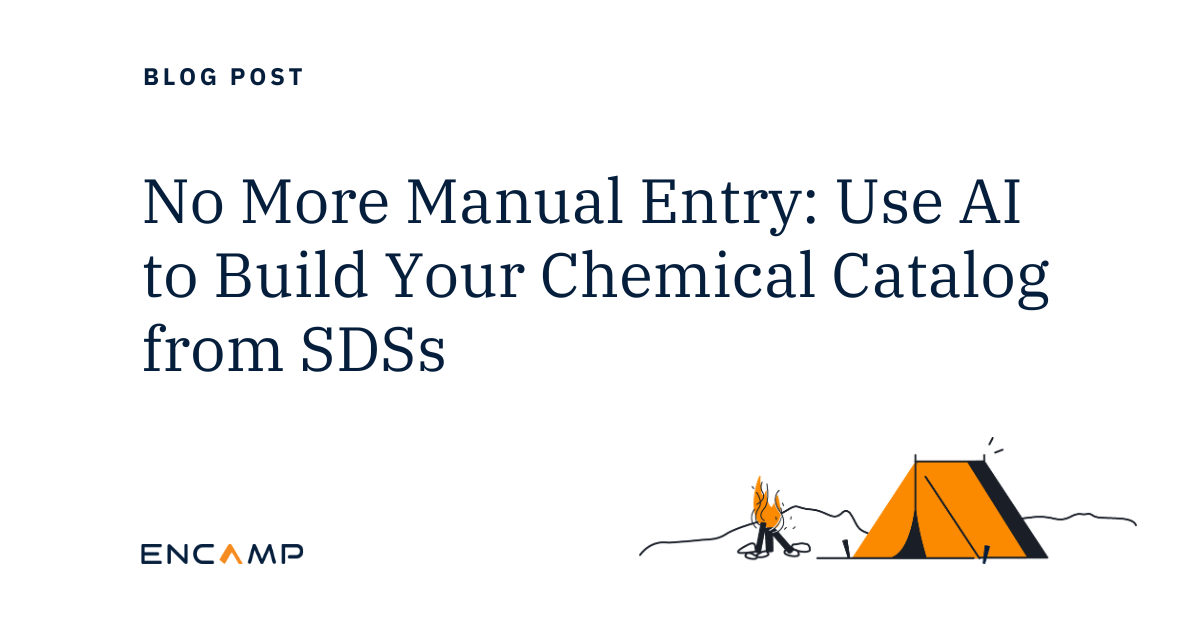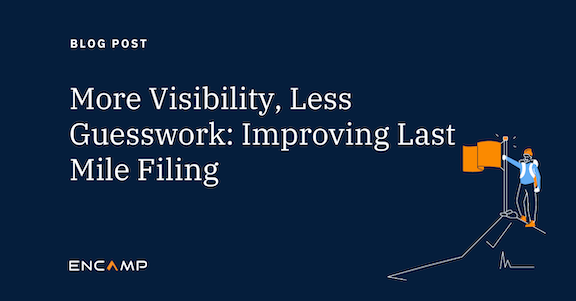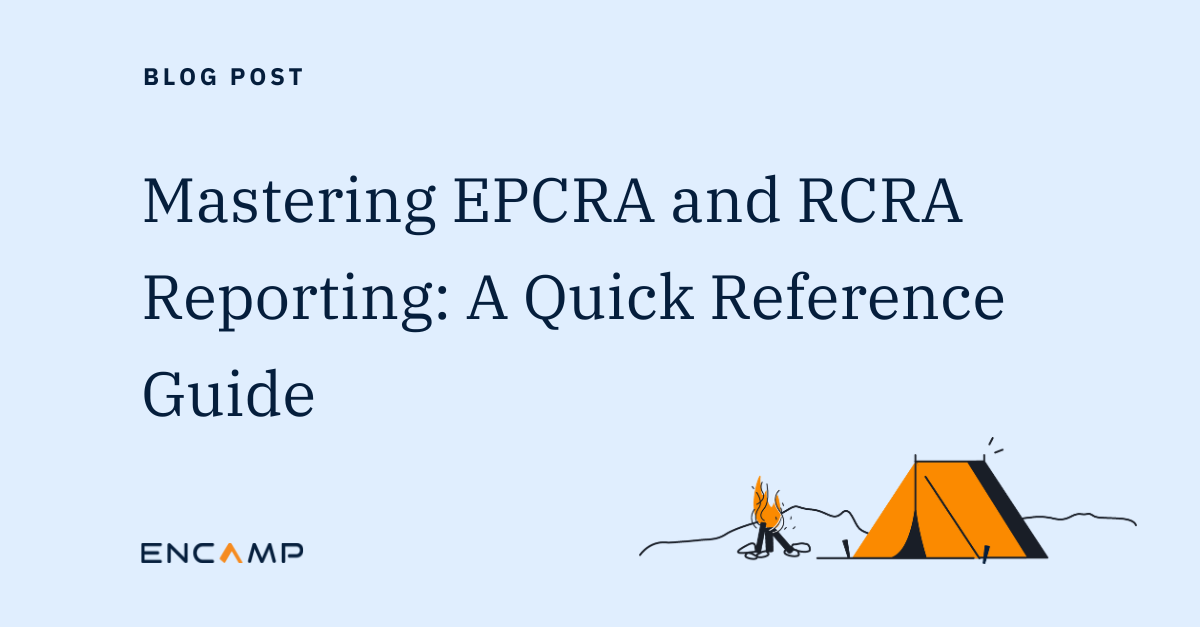Accurate and timely EHS compliance requires reporting data to be both visible and clean, particularly at the facility level. When every facility’s compliance information meets the exact Tier II reporting requirements for program areas like EPCRA and RCRA, EHS and corporate leaders can rest easy. But when leaders don’t trust the data their facilities are reporting, they lose sleep. The penalties for non-compliance, after all, can get expensive.
Where dispersed facilities are involved, creating clarity in the compliance data you report for each site is the key to avoiding non-compliance violations. And clarity begins by centralizing the data for all facility locations — which starts by centralizing the way data is collected itself. Enterprise-wide, this enables stakeholders at every level of the EHS compliance function to:
- Increase data visibility across sites
- Ensure control throughout the compliance process
- Understand reporting nuances at all regulatory levels to stay in compliance
Centralize Data Collection for Visibility & Tier II Clarity
More than any other aspect of compliance reporting, those three outcomes (rewards!) make centralizing how you collect, process and validate required data for every facility a must. So is keeping data in full view at every step.
Only 35% of executives have a high level of trust in their organization’s data. Source: Guardians of Trust, Forrester Consulting and KPMG International
A Tier II reporting need for businesses of all kinds
Businesses of all kinds maintain different facilities for production, distribution, fulfillment and the like, and often house hazardous chemicals of some type in those facilities. Even businesses that don’t always immediately come to mind. Think of non-store retailers, merchant wholesalers, general merchandisers, and companies in the food and beverage industry whose operations are often dispersed. Others could be businesses specializing in building materials, garden equipment and supplies, warehousing and storage, truck transportation, and rental and leasing services.
While businesses such as these don’t manufacture hazardous chemicals, they do typically use and store them. That means the business is responsible for reporting chemicals included on the EPA List of Lists, and must do so with complete and accurate compliance data.
Common problems for EHS compliance data management
For many businesses with distributed facilities, one glaring compliance reporting problem is siloed information sources and very few established data pipelines to each site they operate. Another problem is the lack of a single, central repository to organize and verify collected data for Tier II reports. Other issues? Manual data collection and disorganized spreadsheets. Little or no data visibility. Not fully understanding reporting requirements for respective state and local agencies. Even employee turnover can interrupt data collection and processing tasks and schedules.
Given hurdles like these, digital transformation firm Softengi — which provides many of its services to the EHS industry — has uncovered what they term “some sad statistics” for EHS teams in general:
- 53% manage data using manual processes in an attempt to get data in one view
- 52% spend excessive time updating spreadsheets
- 53% leave critical data unanalyzed
There’s a better way to process data for compliance and Tier II reporting.
Central Data Collection Across Facilities: 3 Rewards
Especially for data that lives in different places, such as spreadsheets and data systems that aren’t fully integrated, gaining greater control over information helps ensure that Tier II reports are accurate, as well as auditable. At one end of this effort is data collection. At the other is final Tier II reporting. In between is keeping data visible and being able to monitor it for accuracy throughout the process, all within a single continuous view.
This is where environmental data management software can make a positive impact. The aim is to centralize data collection functions and establish a single data repository for all information across EHS compliance operations. Then for each facility you oversee, it becomes easier to track and access all required compliance information, from digitally storing safety data sheets (SDSs) to threshold determinations and proof of compliance.
The result is improved data processing for EHS compliance, and better clarity and understanding for Tier II reporting by enhancing these three aspects of the compliance function.
1. Increase data visibility across sites
Again, centralizing information from dispersed facilities into one place increases data visibility for tracking and validation. Think of things like confirming chemical inventories, determining thresholds, and verifying SDSs.
2. Ensure control throughout the compliance process
In terms of compliance, the process is a chain of events: Product characterization, data verification, and final report submissions. Having control over the entire EHS compliance process is imperative to ensure the quality, completeness and accuracy of data throughout all phases of data collection and report compilation, not just at the final submission stage.
“The voracious appetite for data is a challenge in general,” according to Bob Johnson, Environmental Affairs Manager for Lennox International, which operates 250 distribution locations in 40 states. “And then you add multiple systems, various types of database management, and a proliferation of (state) reporting portals. Trying to stay ahead of it all is a huge challenge.”
Making sure the process and chain of events are connected and run efficiently helps streamline Tier II reporting as a whole.
3. Understand reporting nuances at all regulatory levels to stay in compliance
When sites are located in various states, tracking compliance updates and notifications specific to an EHS program area or local regulatory level is an ongoing obstacle. Automated alerts and notifications in an environmental data management software system help EHS leaders navigate regulatory requirements (and even fee structures) from state to state and at local levels.
Now, consider one more stat from a study by business data and reporting solutions provider Workiva, published on esgtoday.com:
More than 70% of executives surveyed across multiple industries and regions reported they lack confidence in their organizations’ own ESG reporting, and nearly two thirds feel unprepared to meet ESG goals and disclosure requirements.
Most EHS leaders who juggle Tier II reporting data across different sites feel the same way.
Transforming the way enterprises stay in compliance
Encamp is on a mission to create a world where good for business can equal good for the environment. We help enterprises transform compliance programs and human processes into a technology-driven system that lays the foundation for accurate and ongoing environmental compliance through a blended method of intelligent high-tech solutions and high-touch expert support.
Tom Bailey
Tom is the Senior Content Writer at Encamp. And like all other Encampers, he’s in tune with the environment and what happens to it. He’s been writing about creative technology solutions for longer than he cares to admit.



